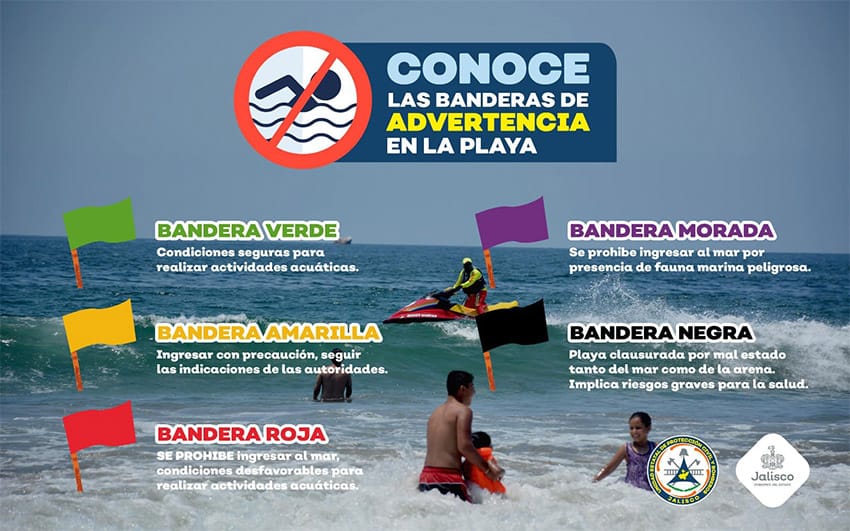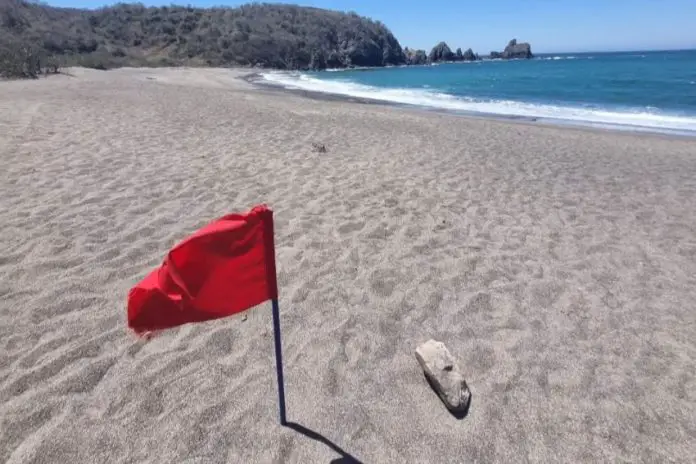Civil Protection officials in the Jalisco resort town of Puerto Vallarta closed nine of the area’s 20 beaches to swimmers due to strong ocean currents that prompted a rescue operation on Thursday.
Authorities came to the rescue of five tourists who were snorkeling in Mismaloya cove — a fishing village about 15 minutes south of Puerto Vallarta. The snorkelers were carried by the undertow out beyond the reef before lifeguards and Civil Protection agents came to the rescue by boat.
In addition to the undertow, high waves induced officials to order red flags raised on nine beaches: Gemelas, Palmares, Olas Altas, Burros, Camarones, Garza Blanca, Hilton, Malecón and Holi beaches were closed on Thursday. Olas Altas had a second flag, a purple one, after a crocodile was spotted in the area.
The red flags were still in place on Friday morning and lifeguards were warning beachgoers to stay out of the water.
“We have slightly elevated waves along Vallarta’s beaches as a consequence of afternoon winds,” Blanca Becerra, second-in-command at the State Civil Protection and Firemen’s Unit (UEPCBJ), told Quadratín Jalisco on Thursday. “There are big gusts of wind exceeding 14 kilometers per hour.”
The UEPCBJ also issued an alert to the Easter Week vacationers: “Please heed the warnings and recommendations of the authorities.”

Becerra said the undertow was a significant issue, especially in areas where rocky outcrops in the water posed risks for swimmers.
The ocean currents are a real concern in Puerto Vallarta. In January, a 29-year-old from the state of Puebla went missing after going into the ocean. His companion was able to fight the current, return to shore and alert the authorities.
Officials launched a rescue effort using boats, jet skis and divers, but were unable to find the missing swimmer. Others patrolled the beaches in case the victim’s body washed up on the beach. Officials did not reveal if the body was ever found.
The UEPCBJ was maintaining a presence along the red-flagged beaches and officials said they were not sure when tourists might be allowed back into the ocean at those nine beaches.
Becerra urged visitors to consult with lifeguards at yellow-flagged beaches to find out what areas were considered safe and to avoid going into the water under the influence of alcohol. Yellow flags indicate visitors should use caution when entering the water.
With reports from Milenio, El Informador and Quadratín Jalisco
